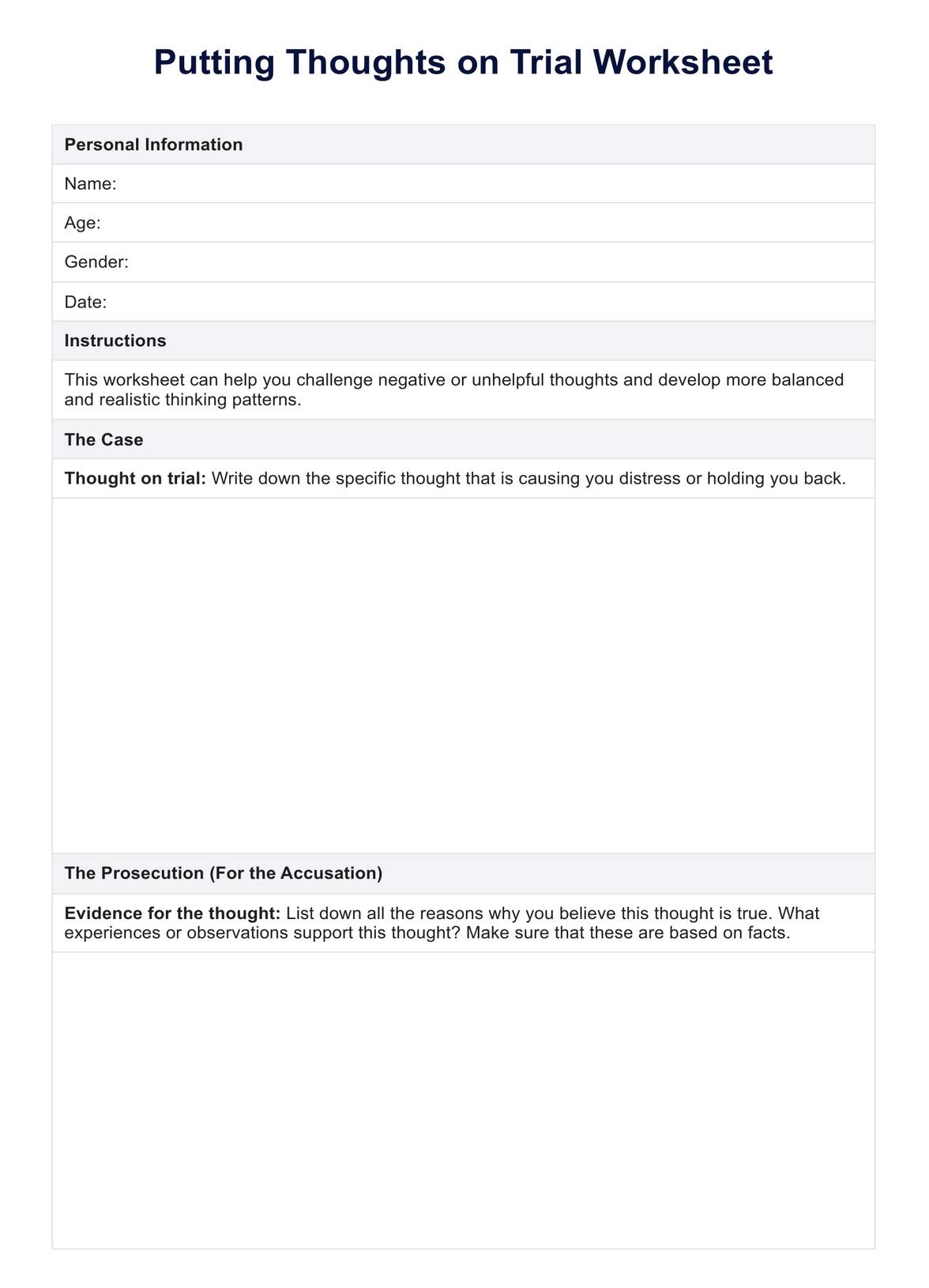Allow them to focus on recurrent, distressing thoughts that significantly impact their emotions and behaviors, especially those that contribute to anxiety, depression, or stress.

Guide clients to learn how to support or challenge their thoughts with evidences through this free worksheet.
Allow them to focus on recurrent, distressing thoughts that significantly impact their emotions and behaviors, especially those that contribute to anxiety, depression, or stress.
The worksheet can be used to address various cognitive distortions, such as overgeneralizations, catastrophizing, and all-or-nothing thinking.
Clients may struggle to identify or evaluate the evidence for their irrational thoughts accurately, or they may have difficulty generating alternative, more realistic thoughts.
EHR and practice management software
*No credit card required
Free
$0/usd
Unlimited clients
Telehealth
1GB of storage
Client portal text
Automated billing and online payments